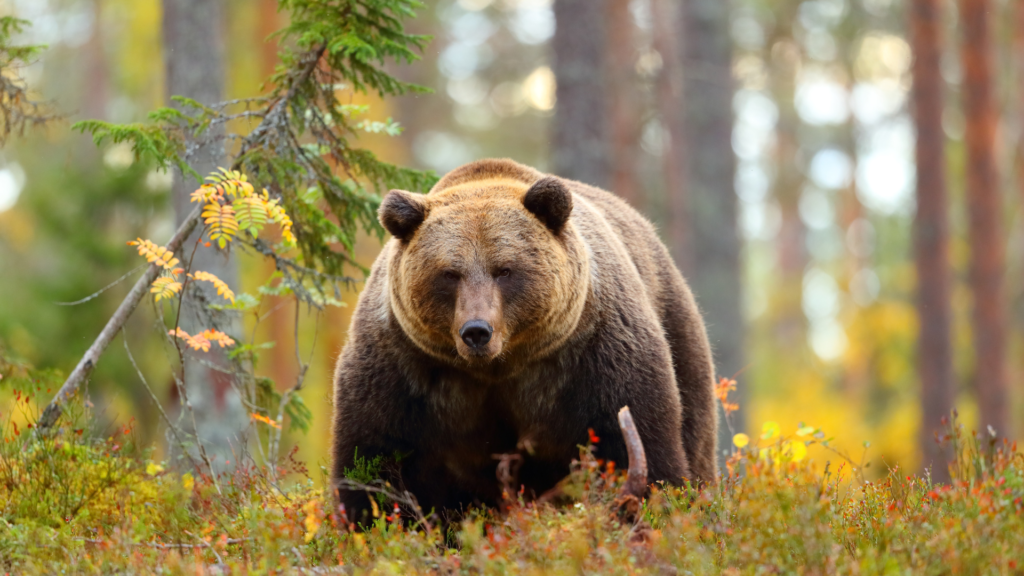The wolf, a prominent member of the canid family, roams the wild regions of Asia, Europe, and North America, once covering even broader territories. Known for their social structure and pack dynamics, wolves are skilled hunters, often targeting large prey like deer, elk, and moose. Their vast territories sometimes lead to disputes between packs over hunting grounds, emphasizing their territorial nature.
Scientific Classification
- Kingdom: Animalia
- Phylum: Chordata
- Class: Mammalia
- Order: Carnivora
Physical Description and Appearance
The wolf is a well-adapted predator with a powerful physique designed for endurance, agility, and strength. Its body structure, fur composition, and physical features allow it to thrive in diverse environments, from freezing Arctic tundras to arid deserts.
Size and Weight
Wolves exhibit significant size variations depending on their subspecies and habitat. On average, they measure between 41–63 inches (105–160 cm) in body length, excluding the tail, which adds another 11–20 inches (30–50 cm). Their shoulder height ranges from 26 to 36 inches (66–91 cm). The weight of an adult wolf varies from 26 to 175 pounds (12–79.4 kg), with males generally being larger and heavier than females. Arctic and Northwestern wolves tend to be the largest, while Arabian and Indian wolves are among the smallest.
Body Structure
This resilient carnivore has a robust, muscular build with a deep chest and strong limbs, enabling it to cover vast distances while hunting. Its elongated legs provide excellent endurance, allowing it to travel up to 30 miles (50 km) per day in search of food. The large, well-padded paws, equipped with non-retractable claws, offer stability and traction on various terrains, from snow-covered landscapes to rocky slopes. The long, bushy tail helps with balance and serves as insulation during cold weather when the animal curls up to sleep.
Head and Facial Features
The wolf’s head is broad and well-defined, with a long, blunt muzzle that houses strong jaw muscles. Its skull structure is adapted for powerful biting and tearing flesh. The eyes, typically amber or yellow, provide keen vision, particularly in low-light conditions, making it an effective nocturnal hunter. Erect, triangular ears enhance its acute sense of hearing, allowing it to detect prey from great distances or communicate with pack members through vocalizations.
Teeth and Bite Force
A defining feature of wolves is their impressive dentition. They possess 42 strong teeth, including elongated canines that pierce flesh and sturdy molars designed for crushing bones. The bite force of a wolf is approximately 1,500 pounds per square inch (PSI), significantly stronger than most domesticated dogs. This immense pressure enables them to break through thick hides and consume nearly every part of their prey, minimizing waste.
Fur and Coloration
Wolves are covered in thick fur that provides protection against harsh climates. Their double-layered coat consists of an outer guard layer that repels moisture and dirt and a dense undercoat that insulates against extreme temperatures. The fur’s coloration varies based on the subspecies and geographical location, ranging from shades of gray, brown, and black to nearly pure white in Arctic wolves. Seasonal changes also affect their coat thickness, with a denser winter coat shedding in spring to accommodate warmer conditions.
This combination of size, strength, and adaptability makes the wolf a formidable and efficient predator, perfectly suited for survival in diverse habitats.
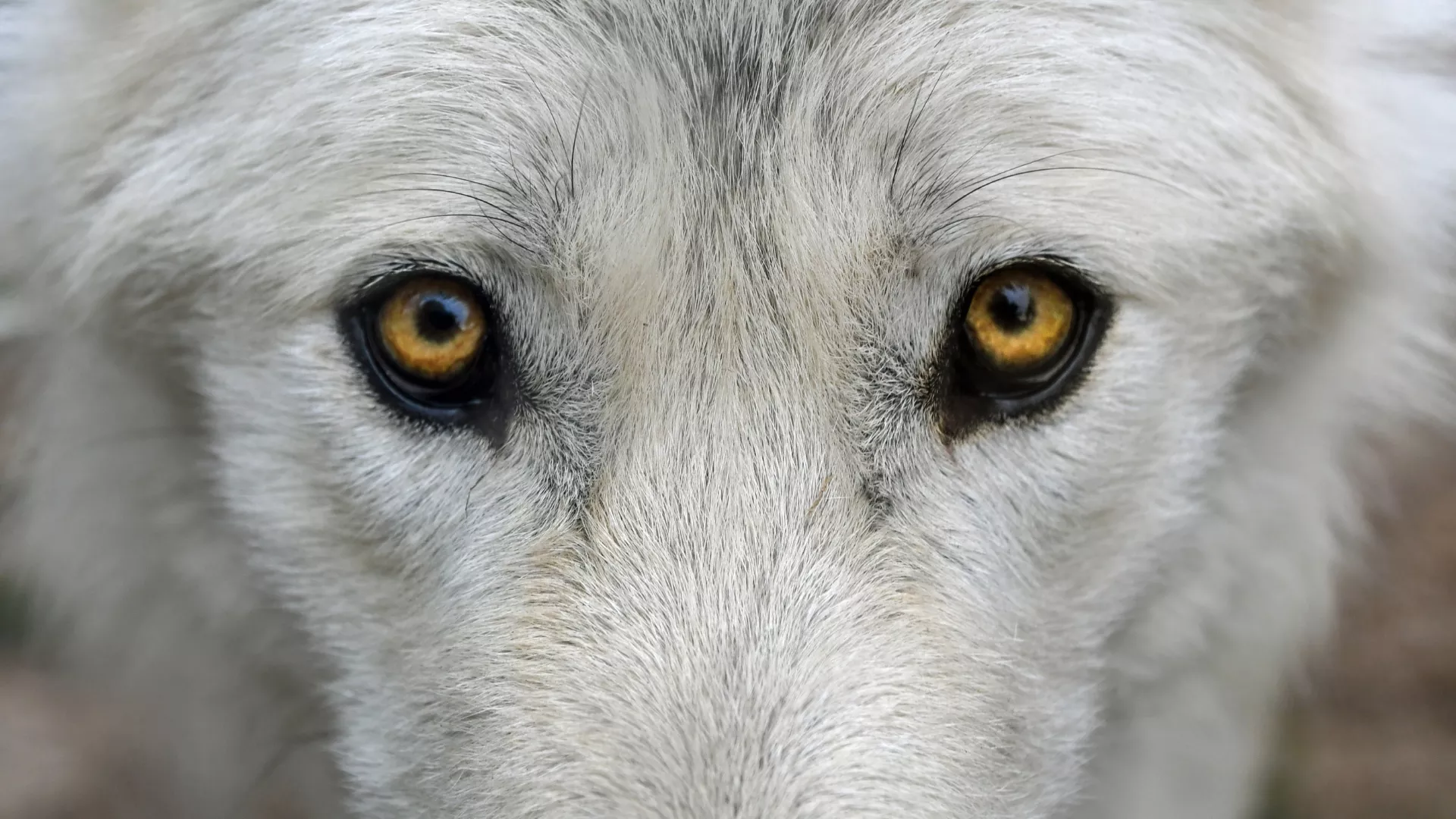

types of wolves
There are many types of wolves, each with distinct adaptations and habitats. Below is a detailed look at some of the most well-known species:
- Tundra Wolf: This majestic creature inhabits the Arctic tundra, where it thrives in extreme cold. The powerful beast has a thick, white coat that provides insulation against freezing temperatures. These animals are known for their ability to hunt large prey like caribou and muskoxen.
- Arabian Wolf: This gentle giant is found in the deserts of the Arabian Peninsula. The intelligent mammal has adapted to arid environments, often preying on small mammals and reptiles. These animals are smaller in size compared to other subspecies, making them well-suited for their harsh habitat.
- Steppe Wolf: This powerful predator roams the grasslands of Central Asia. Known for its endurance, the majestic creature can travel long distances in search of food. These animals primarily hunt wild boar and deer, using their keen senses to track prey.
- Red Wolf: This unique creature is native to the southeastern United States. The intelligent mammal is critically endangered, with conservation efforts focused on habitat restoration and captive breeding programs. These animals are known for their reddish-brown fur and slender build.
- Arctic Wolf: This gentle giant is perfectly adapted to life in the Arctic regions. The powerful beast’s pure white coat provides camouflage in the snow, while its thick fur offers protection against the cold. These animals primarily hunt muskoxen and Arctic hares.
- Northwestern Wolf: This majestic creature is found in the forests and mountains of North America. The intelligent mammal is known for its large size and powerful build, making it a formidable predator. These animals often hunt elk, moose, and bison.
- Eurasian Wolf: This powerful predator is widespread across Europe and Asia. The majestic creature has a varied diet, including deer, wild boar, and livestock. These animals are highly adaptable, thriving in both forests and open plains.
- Timber Wolf: This gentle giant is commonly found in the forests of North America. The intelligent mammal is known for its social behavior, living in packs that work together to hunt large prey. These animals are a symbol of wilderness and resilience.
- Iberian Wolf: This unique creature inhabits the forests and mountains of the Iberian Peninsula. The powerful beast is known for its distinctive howl, which can be heard over long distances. These animals primarily hunt wild boar and deer.
- Indian Wolf: This majestic creature is found in the grasslands and scrublands of India. The intelligent mammal is smaller in size compared to other subspecies, making it well-suited for hunting smaller prey like rodents and hares. These animals are highly adaptable to human-altered landscapes.
- Mongolian Wolf: This powerful predator roams the steppes and deserts of Mongolia. The majestic creature is known for its endurance and ability to survive in harsh conditions. These animals primarily hunt wild sheep and goats.
- Mexican Wolf: This gentle giant is one of the most endangered subspecies, found in the southwestern United States and Mexico. The intelligent mammal is the focus of extensive conservation efforts, including captive breeding and reintroduction programs. These animals are known for their small size and grayish-brown fur.
- British Columbian Wolf: This majestic creature inhabits the forests and mountains of British Columbia. The powerful beast is known for its large size and thick fur, which provides insulation against the cold. These animals primarily hunt deer and elk.
- Alaskan Tundra Wolf: This unique creature is found in the tundra regions of Alaska. The intelligent mammal has a thick, white coat that provides camouflage in the snow. These animals are known for their ability to hunt caribou and muskoxen.
- Northern Rocky Mountain Wolf: This powerful predator roams the Rocky Mountains of North America. The majestic creature is known for its large size and powerful build, making it a formidable hunter. These animals primarily hunt elk and deer.
- Alexander Archipelago Wolf: This gentle giant is found in the coastal rainforests of Alaska. The intelligent mammal is smaller in size compared to other subspecies, making it well-suited for hunting small prey like deer and rodents. These animals are highly adapted to their forest habitat.
- Labrador Wolf: This majestic creature inhabits the forests and tundra of Labrador. The powerful beast is known for its thick fur and large size, making it well-suited for cold climates. These animals primarily hunt caribou and moose.
- Interior Alaskan Wolf: This unique creature is found in the interior regions of Alaska. The intelligent mammal is known for its endurance and ability to travel long distances in search of food. These animals primarily hunt moose and caribou.
- Vancouver Island Wolf: This gentle giant is native to Vancouver Island. The powerful beast is known for its adaptability to forested environments. These animals primarily hunt deer and small mammals.
- Greenland Wolf: This majestic creature inhabits the remote regions of Greenland. The intelligent mammal has a thick, white coat that provides insulation against the cold. These animals are known for their ability to hunt muskoxen and Arctic hares.
- Mackenzie River Wolf: This powerful predator roams the forests and tundra along the Mackenzie River. The majestic creature is known for its large size and thick fur, making it well-suited for cold climates. These animals primarily hunt caribou and moose.
- Hudson Bay Wolf: This unique creature is found in the regions surrounding Hudson Bay. The intelligent mammal is known for its adaptability to both forest and tundra environments. These animals primarily hunt caribou and small mammals.
- Baffin Island Wolf: This gentle giant inhabits the remote regions of Baffin Island. The powerful beast has a thick, white coat that provides camouflage in the snow. These animals are known for their ability to hunt Arctic hares and caribou.
- Himalayan Wolf: This majestic creature is found in the high-altitude regions of the Himalayas. The intelligent mammal is known for its thick fur and ability to survive in extreme conditions. These animals primarily hunt wild sheep and goats.
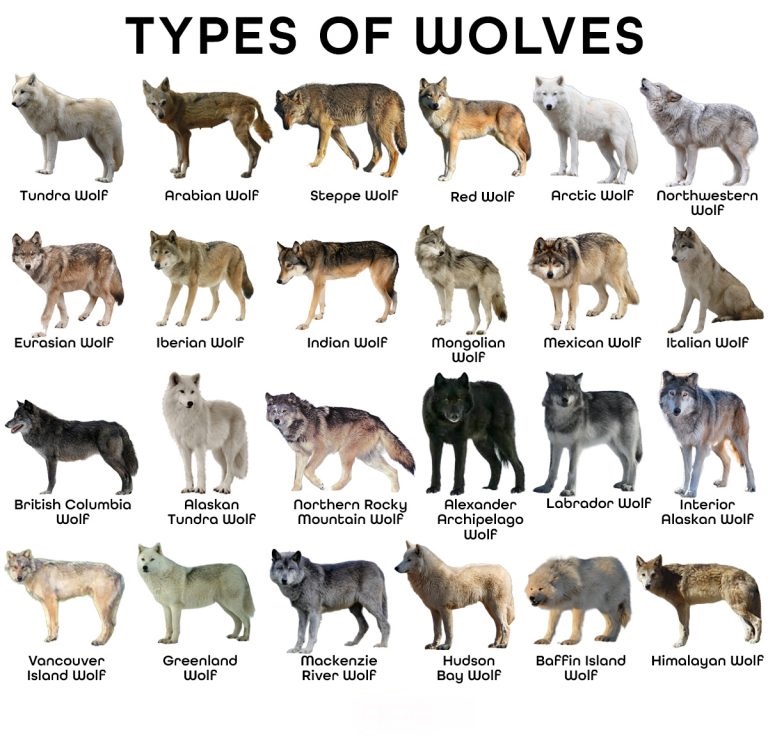
Distribution
The wolf is a highly adaptable carnivore found across North America, Europe, and Asia. Once widespread throughout the Northern Hemisphere, this species has experienced significant population declines due to habitat destruction, hunting, and human expansion. While some regions still support thriving populations, others have witnessed sharp declines, leading to local extinctions and fragmented habitats.
This resilient predator thrives in diverse ecosystems, ranging from dense forests and open grasslands to arid deserts and icy tundras. Its ability to adjust to varying climates, altitudes, and prey availability allows it to survive in conditions as extreme as the Arctic or as warm as the Mediterranean. In remote wilderness areas with minimal human interference, populations remain relatively stable, whereas in regions with urban development and agricultural expansion, numbers have dwindled.
Historically, this species roamed vast territories, migrating across continents in search of food and suitable denning sites. However, human activities have led to significant fragmentation, pushing many groups into isolated pockets. In countries such as Ireland, the United Kingdom, and Japan, these animals have become extinct, while in places like Yellowstone National Park, successful reintroduction programs have helped restore ecological balance. In vast territories like Canada, Russia, and Scandinavia, where expansive wilderness provides ample space and resources, populations continue to thrive under legal protection.
Despite being classified as a species of “Least Concern” by the IUCN, certain subspecies face serious threats. Hunting, poaching, and a decline in prey species have made survival increasingly difficult in some regions. Conservation programs emphasize habitat preservation, anti-poaching regulations, and public awareness campaigns to ensure the long-term survival of this intelligent and social carnivore. Scientists and conservationists continue to monitor populations, implement protective measures, and advocate for coexistence strategies to reduce conflicts between these apex predators and human communities.
Habitat
The wolf is an adaptable predator capable of thriving in a wide range of environments. From dense forests and expansive grasslands to arid deserts and frozen tundras, this species demonstrates remarkable resilience in diverse ecosystems. Its ability to inhabit such varied landscapes depends largely on prey availability, climate conditions, and human activity.
In forested regions, thick vegetation provides ample cover for stalking prey and raising offspring. Woodlands and boreal forests, particularly in North America, Europe, and Asia, serve as prime habitats where these animals can establish stable territories. In open plains and grasslands, where herds of ungulates roam, they rely on speed, endurance, and teamwork to secure food. Despite the exposure of such environments, these carnivores adapt by using natural formations like hills, riverbanks, and rocky outcrops for shelter.
Some populations have successfully adapted to life in deserts and semi-arid regions, such as the Arabian Peninsula and Central Asia. In these harsh landscapes, survival depends on resourcefulness—digging dens in shaded areas, hunting smaller prey like hares and rodents, and covering vast distances in search of water. In contrast, those inhabiting Arctic tundras endure extreme cold by developing thick fur and hunting large prey such as musk oxen and caribou.
Human expansion and deforestation have pushed many groups into more remote areas, reducing available territory and forcing them into closer proximity with livestock. This increased interaction often leads to conflict, making conservation efforts crucial in balancing the needs of both wildlife and human communities. Protective measures, including habitat preservation, legal protections, and non-lethal deterrents, play a vital role in ensuring the long-term survival of this highly adaptable carnivore.
Lifespan
The wolf has a variable lifespan influenced by environmental factors, food availability, and human-related threats. In the wild, this species typically lives around 6 to 14 years, though individuals in protected areas may survive longer. Captive environments, where threats like hunting, disease, and food scarcity are minimized, allow some to reach up to 17 years.
Survival rates are significantly impacted by external pressures. Pups face the highest mortality, with many failing to reach adulthood due to predation, harsh weather, or lack of nourishment. Juveniles that successfully integrate into a pack benefit from cooperative hunting and social bonds, increasing their chances of longevity. However, competition within groups, injuries from territorial disputes, and scarcity of prey can shorten life expectancy.
Geographic location also plays a crucial role in determining lifespan. Those inhabiting harsh Arctic regions endure extreme weather conditions and seasonal food shortages, leading to higher mortality rates. In contrast, populations residing in temperate forests or grasslands may have better access to consistent food sources, resulting in longer lives. Additionally, the presence of large predators like bears and big cats introduces further risks, as conflicts over territory and kills can be fatal.
Human activities remain one of the greatest threats to longevity. Hunting, poaching, and habitat destruction have historically reduced numbers, with road accidents and retaliatory killings posing further dangers. Conservation efforts, such as protected reserves and anti-poaching initiatives, aim to mitigate these risks and provide stable conditions for this resilient carnivore to thrive.
Diet
The wolf is a carnivorous predator, primarily relying on a diet of large ungulates, such as deer, elk, and moose, to meet its nutritional needs. These animals possess strong hunting instincts and cooperative behaviors, allowing them to work in packs to isolate and overpower large prey. Hunting is often a group effort, with each member contributing to the pursuit and eventual capture of prey. This team strategy maximizes the chances of a successful kill, ensuring that even large, strong prey can be taken down.
In addition to their primary diet of large mammals, these creatures also consume smaller animals such as rabbits, hares, rodents, and birds, particularly when larger prey is scarce. During times of food shortage, they may also scavenge carcasses, feeding on the remains of animals killed by other predators. This opportunistic feeding behavior is crucial for survival, especially in harsh conditions where food can be difficult to find.
Fruits, berries, and even insects occasionally make up a portion of their diet, particularly in the summer months when plant matter is more abundant. While their digestive systems are adapted to process mostly meat, these supplemental food sources provide additional nutrients that support their energy needs. For example, berries can offer vitamins and antioxidants, while insects provide protein and fat when other prey is less available.
The species’ ability to adapt its diet based on the availability of resources is one of the factors that have allowed it to thrive in such a wide range of environments. Whether in remote forests, open plains, or harsh tundra, this predator is able to sustain itself by being flexible and opportunistic, ensuring its survival across diverse habitats.

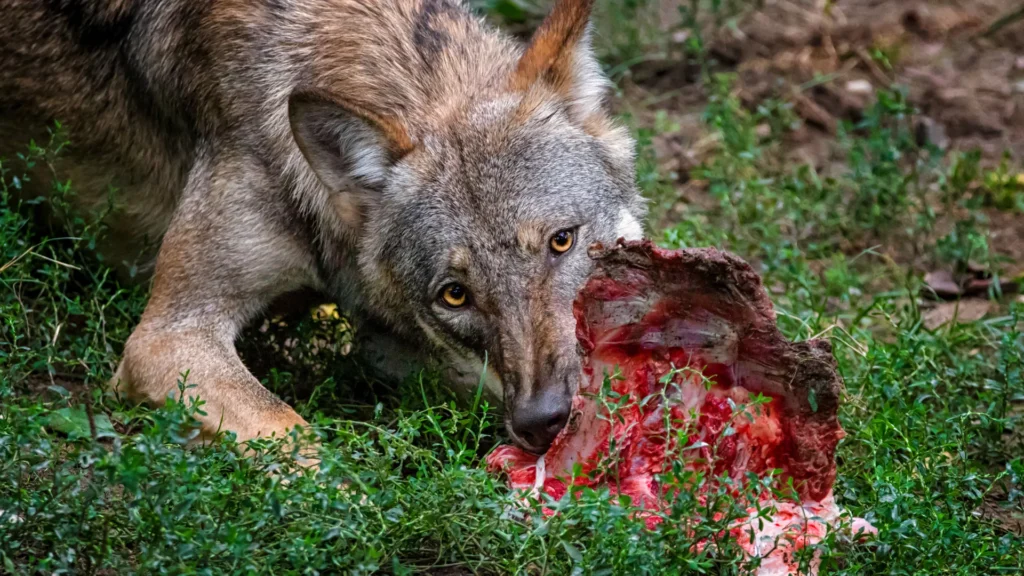
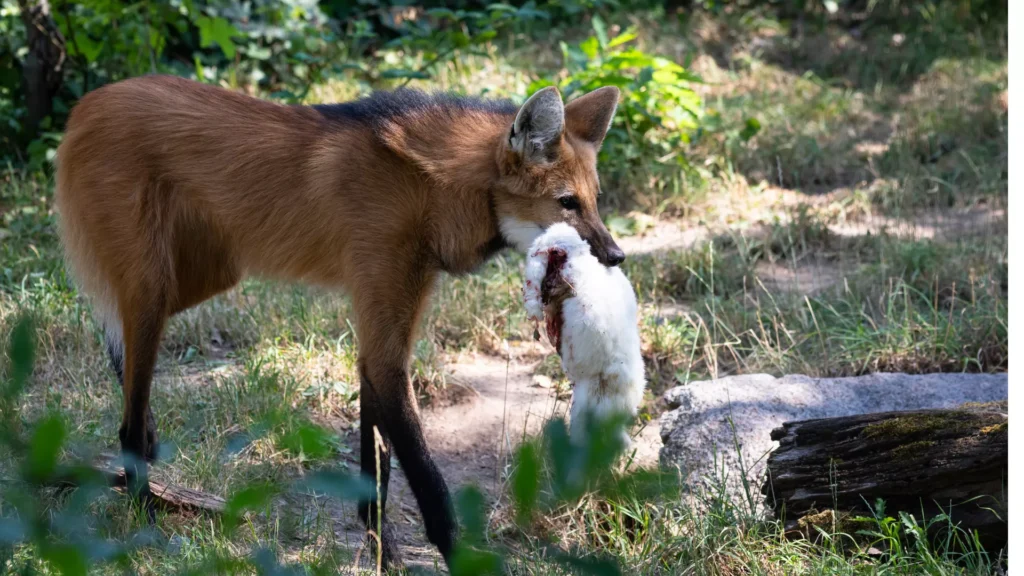
Behavior
The wolf is a highly social animal, known for its complex social structures and cooperative behaviors. These creatures live in tight-knit family units called packs, which typically consist of 2 to 8 individuals, though some packs can be much larger depending on food availability and territory size. Each pack has a clear hierarchy, with an alpha male and female at the top, responsible for leading the group and making key decisions about hunting, territory, and reproduction. The strength of these hierarchical bonds ensures the pack’s cohesion, as each member has specific roles to contribute to the group’s survival.
Communication within the pack is essential for maintaining order and facilitating cooperation. This species uses a wide range of vocalizations, including howls, barks, and growls, to communicate with each other. Howling, in particular, is an important behavior used for long-distance communication, marking territory, and coordinating hunting efforts. Vocal signals also play a crucial role in reinforcing social bonds, especially between the alpha pair and their offspring.
In addition to vocal communication, body language and scent marking are also key aspects of how they interact. A wolf’s body posture, ear positioning, and facial expressions convey a variety of messages, from aggression to submission. Scent marking, often through urine and feces, is used to define territory and signal the presence of a pack in a particular area. These visual and olfactory signals help maintain social order and minimize conflicts within the pack.
The hunting behavior of this species is another remarkable aspect of its social structure. Wolves hunt cooperatively, using strategy and teamwork to take down prey much larger than themselves. They often target weak, injured, or isolated animals, ensuring that their hunts are successful while minimizing the risk of injury. The pack works in tandem, with some individuals driving the prey toward others who are waiting in ambush. This coordinated effort maximizes the chances of a kill and ensures that the group has enough food to sustain itself.
Despite their fearsome reputation, these creatures are typically shy and avoid human contact whenever possible. They are highly intelligent animals that rely on their instincts and the strength of their social bonds to navigate the challenges of the wild. Their ability to adapt to a variety of environments and live in close-knit groups is a testament to their resilience and survival instincts.
Predators
Despite being apex predators in many ecosystems, wolves are not without their own threats. While they are at the top of the food chain, these creatures face competition and danger from larger predators that can threaten their lives. In some regions, grizzly bears and polar bears pose a significant risk, especially when food sources are scarce or during territorial disputes. These larger carnivores can overpower a pack, particularly if they are scavenging the same kill or if a wolf is isolated from its group.
Another notable predator is the Siberian tiger, which inhabits the same forests as some populations of this species. These massive cats are capable of killing adult wolves, particularly if there is a direct confrontation over territory or food. Although direct interactions between tigers and wolves are rare, competition for food can bring them into conflict.
In addition to these formidable predators, inter-pack conflicts also pose risks. Wolves are territorial animals, and fights over territory can result in injuries or fatalities, especially when rival packs encounter one another. These confrontations can be particularly dangerous for younger or weaker members of the pack, who are more vulnerable to attack.
Human activities represent another significant threat to the survival of this species. While humans are not natural predators of these animals, hunting, poaching, and habitat destruction can have devastating impacts. In some regions, they are hunted for their fur or as part of control measures when they come into conflict with livestock. Road accidents, poisoning, and retaliation killings by farmers are also significant threats that can lead to fatalities in both individual wolves and entire packs.
Despite these challenges, the species continues to show remarkable resilience. Their social structure and cooperative nature allow them to defend themselves from threats and navigate complex relationships with other predators. Their ability to work together in a pack is one of the key strategies that help them mitigate the risks they face in the wild.
Adaptations
The wolf is a highly adapted predator, capable of thriving in diverse environments ranging from frozen tundras to arid deserts. Over centuries, these creatures have evolved a range of physical and behavioral adaptations that enhance their survival. One of the most notable features is their dense, two-layered fur, which provides insulation against extreme cold. This specialized coat helps them retain heat in freezing conditions, particularly in Arctic and high-altitude regions. The outer layer of fur is long and coarse, designed to repel snow and water, while the undercoat is thick and soft, providing essential warmth.
Their powerful jaws and sharp teeth are another key adaptation. The species’ molars are designed to crush bones, while their canines are used for tearing flesh, making them efficient hunters and scavengers. The jaw muscles generate immense pressure, enabling them to break through tough hides and access the nutrient-rich marrow inside bones. This strength also allows them to tear through tough carcasses in harsh environments when prey is scarce.
Wolves are also equipped with long, muscular legs that enable them to cover large distances quickly and efficiently. These legs are especially beneficial in snow-covered landscapes, where they can travel over great expanses without exhausting themselves. The species’ stamina is impressive; they can maintain a steady pace while hunting for hours, covering vast areas in search of prey. Their ability to run at high speeds for extended periods makes them formidable hunters, as they can chase down prey that might outrun slower predators.
Another vital adaptation is their acute sense of smell. Wolves can detect prey from miles away, using their exceptional olfactory abilities to track scents over long distances. This skill is particularly advantageous when hunting in open terrains or dense forests, as it allows them to locate prey even when it is out of sight. Their keen hearing and sharp eyesight also contribute to their hunting efficiency, enabling them to detect subtle movements or sounds that might signal the presence of potential prey or threats.
Socially, these creatures have evolved a sophisticated communication system. Howling is one of the most well-known methods they use to communicate with other members of their pack, marking territory and coordinating hunts. Scent marking through urine and feces is another crucial behavioral adaptation that allows them to define their territory and communicate their presence to other packs. Their body language is equally important, with specific postures and movements indicating aggression, submission, or playfulness.
All these adaptations make the species one of the most versatile and resilient predators in the animal kingdom. Whether in the frigid tundra, the dense forests, or the vast plains, these creatures have developed the necessary traits to thrive in a wide range of environments, securing their place at the top of the food chain.
Reproduction and Mating
The wolf is a monogamous species, with pairs typically mating for life. This strong bond between the alpha male and female is essential for the stability of the pack. Breeding generally occurs once a year, during the winter months, when food is more abundant, ensuring that there is enough sustenance for both the adult pack members and the new pups. The timing of this season is also critical as it aligns with the conditions most favorable for the survival of the offspring.
The female goes through a heat cycle, which lasts about 2 to 3 weeks. During this period, the alpha male, and sometimes other males within the pack, may compete for mating rights. However, it is typically the alpha male and female that mate, reinforcing their dominant position within the pack. Once mating has occurred, the female undergoes a gestation period of 62 to 75 days, after which she gives birth to a litter of 4 to 8 pups, although litters can sometimes be smaller or larger depending on environmental conditions and food availability.
Newborn pups are blind and deaf, completely dependent on their mother for warmth and nourishment. The pack plays a crucial role in raising the young, with other members contributing to the care of the pups, often by providing food for the nursing mother and protecting the den site. Pups grow rapidly during the first few weeks, gaining weight and strength as they are fed regurgitated food by the adults. By the time they are about 5 to 6 weeks old, they begin to venture outside the den, exploring their surroundings and learning vital survival skills from older pack members.
As the pups grow, they start to participate in pack activities, such as hunting and socializing. By the time they reach 8 to 12 months, they are fully integrated into the pack and can assist with hunting, although they still rely on the adults for guidance and protection. Reaching sexual maturity at around 2 to 3 years of age, wolves may eventually leave their natal pack in search of a mate, starting the cycle anew.
The species’ reproductive strategy is deeply tied to the social structure of the pack, as the alpha pair ensures the continuation of the group through reproduction. However, not all pack members breed, as the subordinate wolves help to care for the pups and assist with hunting, ensuring the entire pack’s survival. This cooperative approach is vital for maintaining the pack’s strength and cohesion, which in turn enhances the species’ ability to adapt and thrive in various environments.

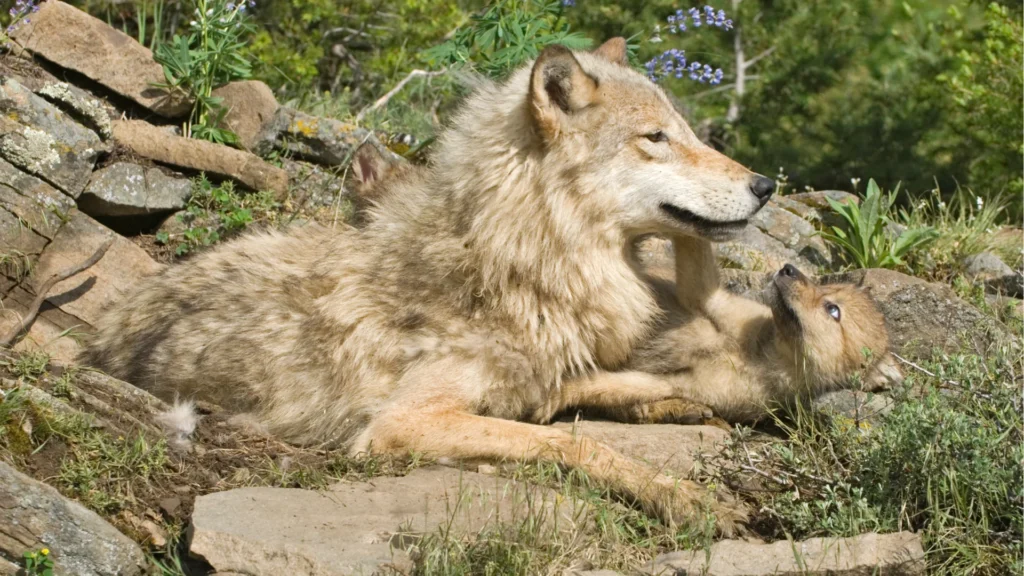
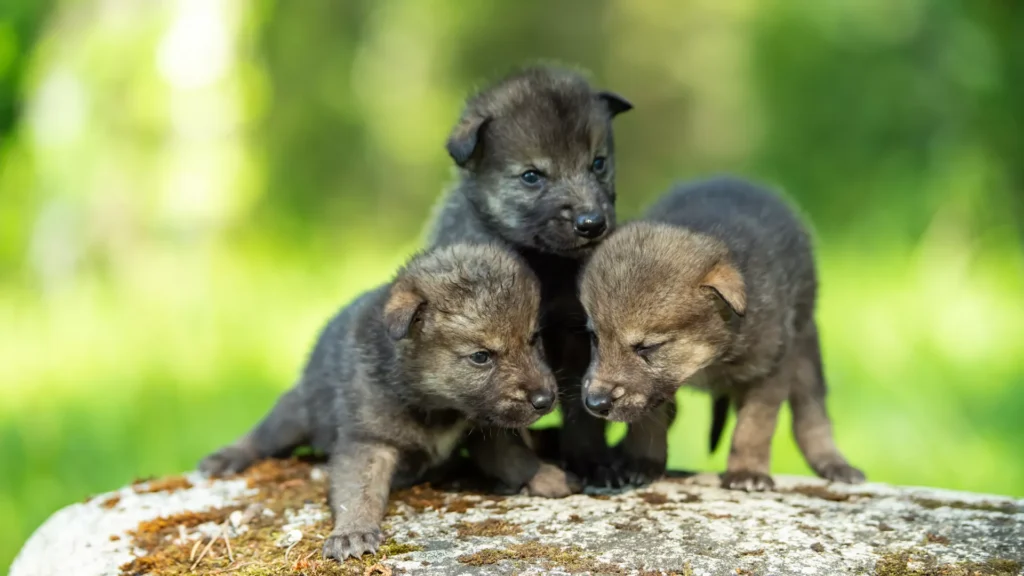
Life Cycle
The life cycle of the wolf is marked by rapid growth and key developmental stages that prepare them for survival in the wild. From the moment they are born, these creatures are completely dependent on their pack for care and protection. Newborn pups are blind and deaf, relying on their mother’s warmth and milk for nourishment. During the first few weeks of their life, they are sheltered in the den and receive constant care from the female and other members of the pack.
As the pups grow, they begin to develop their senses and physical abilities. By the time they are 3 to 4 weeks old, they start to open their eyes and ears, marking the beginning of their sensory development. During this stage, they also begin to move around more actively, crawling and playing, which helps to strengthen their muscles and coordination. Their growth rate is astounding; within a few months, they can become 30 times heavier than their birth weight, as they transition from nursing to eating solid food provided by the adults.
Around the age of 6 weeks, pups are ready to begin exploring outside the den. They start to venture into their surrounding environment, with the adults closely monitoring their movements. This exploration phase is essential for learning important skills such as socialization with pack members, hunting techniques, and survival strategies. During this period, the pack provides constant support and guidance, helping the young wolves learn their place within the social structure and reinforcing the pack’s hierarchy.
By the time they are 6 to 12 months old, pups are nearly fully grown and begin to participate in more pack activities, including group hunts. Although they are still learning, they can assist in the hunting process, helping to bring down smaller prey and learning the skills needed to survive independently. However, they still rely heavily on the older members for protection and guidance, as their hunting and survival skills are not yet fully developed.
At around 1 to 2 years of age, wolves reach physical maturity, though they are not fully independent. By this stage, they are stronger and more capable of taking on larger prey, but still need the support of the pack to bring down large animals. Their full maturity, including sexual maturity, is typically reached at 3 years old. At this point, they may leave the pack to find a mate, either forming a new pack or joining another existing one.
The transition into adulthood is marked by the ability to contribute fully to the pack’s survival, either by hunting, protecting the territory, or caring for the next generation of pups. Depending on the pack dynamics and environmental factors, some individuals may stay within their natal pack for extended periods before eventually moving on. The life cycle of a wolf is ultimately a continuous cycle of growth, adaptation, and cooperation, ensuring the species’ resilience in the wild.
Conservation Status
The wolf is classified by the International Union for Conservation of Nature (IUCN) as “Least Concern” overall due to its relatively stable populations across a broad range. However, this species’ conservation status can vary significantly depending on the region. In areas where wolves still roam freely, such as parts of North America, Europe, and Asia, they are often thriving, supported by strong protections and successful management efforts. In these regions, the wolf’s population has stabilized, and in some places, numbers are even on the rise.
In contrast, the species faces severe challenges in other regions. For example, in certain parts of Asia, including the Himalayas, and in countries such as Bhutan and Nepal, wolves are listed under Appendix I of the Convention on International Trade in Endangered Species (CITES). This listing indicates that these populations are at risk due to factors like habitat loss, poaching, and human-wolf conflict. In these areas, the wolf is often targeted for its fur or as a means of controlling livestock predation.
Human-wolf conflict remains a significant issue, particularly in regions where wolves are seen as threats to livestock. In these areas, farmers may resort to lethal measures to protect their animals, leading to direct loss of wolf life. Additionally, road construction, urban expansion, and deforestation continue to fragment habitats, reducing available territory and making it more difficult for wolves to find food and mates. In some countries, the wolf’s range has been significantly reduced, with populations pushed into more remote or protected areas where human influence is limited.
Conservation efforts have been successful in certain regions, thanks to the implementation of legal protections and the establishment of wildlife reserves. In the United States, for example, the gray wolf has been reintroduced into Yellowstone National Park and other areas, where it has successfully reclaimed its role in the ecosystem. These reintroduction programs have been crucial in maintaining genetic diversity and stabilizing populations, allowing wolves to once again roam vast areas where they once thrived.
International organizations and wildlife agencies have also made significant strides in educating the public about the importance of preserving the wolf. These efforts have helped to change perceptions, as many people now recognize that wolves play a vital role in maintaining the health of ecosystems by regulating prey populations and preventing overgrazing. The wolf is considered an apex predator that helps keep ecosystems in balance, and its presence is essential for the overall biodiversity of the areas it inhabits.
Despite these efforts, the species is still vulnerable in certain parts of the world, and ongoing conservation measures are needed to protect its future. Continued habitat preservation, anti-poaching initiatives, and conflict mitigation programs are essential for ensuring the wolf’s survival in the wild. By working with local communities and educating the public about the species’ ecological value, the hope is that more areas will see the return of the wolf, securing its place in the wild for generations to come.
Interesting Facts
- The wolf, known for its intelligence and complex social structure, has played a significant role in various cultures throughout history. One of the most fascinating aspects of the wolf is its deep connection to mythology and folklore. In Norse mythology, the fearsome wolf Fenrir was prophesied to play a key role in the destruction of the gods during Ragnarok. Similarly, the she-wolf who nurtured Romulus and Remus in ancient Roman mythology is a symbol of strength, resilience, and the founding of the Roman Empire. These stories highlight the powerful and often revered status the wolf holds in human culture.
- The wolf’s social structure is another remarkable feature. Wolves live in packs that function as tightly-knit units, where each member has a specific role to play. The alpha pair, typically the strongest and most dominant members of the pack, lead the group in all decision-making processes, from hunting to territory defense. The hierarchical structure of the pack ensures that the wolf’s social needs are met and that the group can effectively hunt and protect each other. This complex social organization is one of the reasons why the wolf is so successful in the wild, particularly when it comes to hunting large prey like elk or moose.
- In addition to their complex social lives, wolves are incredibly skilled communicators. Wolves use a variety of vocalizations, including howls, barks, and growls, to communicate with each other and to maintain pack cohesion. Howling, in particular, serves as a way to announce the wolf’s presence, communicate over long distances, and establish territory. Interestingly, wolves in different regions have distinct howls, which can vary in pitch and tone. This ability to adapt their vocalizations to different environments further contributes to their success as apex predators.
- The wolf’s adaptability is also reflected in its diet. While wolves primarily hunt large ungulates like deer, moose, and elk, they are opportunistic feeders and will consume a wide range of prey when necessary. In times of scarcity, the wolf can switch to smaller mammals, such as rabbits or rodents, and even scavenge carrion if necessary. The ability of the wolf to shift its diet depending on environmental conditions is one of the reasons it has survived for so long in diverse ecosystems, from the frozen tundra to temperate forests.
- Wolves are also known for their remarkable hunting skills. The wolf’s cooperative hunting strategy is an essential part of its survival. Each pack member plays a vital role in bringing down large prey, and they work together to surround and isolate the animal. This teamwork allows the wolf to hunt prey that is much larger than itself, something that most predators would not be able to do alone. Through coordinated efforts, the pack is able to use strategy and endurance to tire out their prey, ensuring a successful hunt.
- Finally, the wolf’s behavior toward humans is often misunderstood. While wolves have a fearsome reputation, they are actually quite shy and prefer to avoid human contact. In fact, most wolves will steer clear of human settlements, preferring to remain in their natural habitats. This behavior is part of what has allowed the wolf to maintain a degree of mystery and reverence throughout human history. Despite their strong presence in folklore, the wolf is a creature of the wild, capable of coexisting with humans when left undisturbed.
These interesting facts about the wolf reveal not only its incredible adaptability but also its deep cultural and ecological significance. Whether through their social structure, communication skills, or role in ecosystems, wolves continue to fascinate and inspire people around the world.
Additional Information
Communication
Wolves use a variety of vocalizations, including howls, barks, and growls, to communicate with each other. Howling is particularly important for maintaining pack cohesion and marking territory.
Hunting Techniques
Wolves are skilled hunters, using teamwork to bring down prey much larger than themselves. They often target weak or injured animals, increasing their chances of success.
Social Structure
Wolf packs are highly organized, with a clear hierarchy. The alpha pair leads the pack, making decisions about hunting and territory. Other members of the pack have specific roles, such as caring for the young or guarding the territory.
Human-Wolf Conflict
Wolves often come into conflict with humans, particularly in areas where livestock is present. Efforts to mitigate these conflicts include the use of guard animals, fencing, and compensation programs for farmers.
Conservation Efforts
Conservation programs aim to protect wolf populations through habitat preservation, anti-poaching measures, and public education. Reintroduction programs have also been successful in some areas, such as Yellowstone National Park.
faq’s
1. Do wolves attack humans?
Wolves generally avoid humans but can become aggressive if cornered or seeking food near human dwellings.
2. Are wolves dangerous?
Wolves are wary of humans but may react defensively if provoked.
3. Are wolves nocturnal?
Yes, wolves are primarily nocturnal, resting during the day and hunting at night.
4.How do wolves change rivers?
Wolves indirectly influence river ecosystems. Their presence controls herbivore populations, reducing grazing along riverbanks, which in turn stabilizes soil and can alter river courses.
5. Do wolves hibernate?
No, wolves remain active year-round.
6. Are wolves related to dogs?
Yes, domestic dogs are believed to have descended from ancient wolves.
7. How do wolves change rivers?
Wolves indirectly influence river ecosystems by controlling herbivore populations. Their presence reduces grazing along riverbanks, which stabilizes soil, prevents erosion, and can even alter river courses.
8. Do wolves hibernate?
Yes, domestic dogs are believed to have descended from ancient wolves. Over thousands of years, they evolved into distinct species through domestication.
9. Are wolves dangerous?
Wolves are generally wary of humans and are not considered a significant danger. However, they may act defensively or aggressively if they feel threatened, especially if they are provoked.
10. Are wolves related to dogs?
Yes, domestic dogs are believed to have descended from ancient wolves. Over thousands of years, they evolved into distinct species through domestication.
These fascinating facts highlight the intelligence, adaptability, and cultural significance of wolves, making them one of the most intriguing creatures in the animal kingdom!

